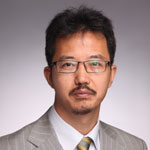The future of Guangdong-Hong Kong-Macao Greater Bay Area is beyond imagination...
Note: The following is an edited translation of a commentary from the Chinese-language "Commentaries on International Affairs."
It takes nearly a month for students from the Hong Kong University of Science and Technology (HKUST) to design an upgraded robot to complete a generational replacement. But if it is processed in Shenzhen, it only takes one or two days to complete. This is what Li Zexiang, a professor at HKUST, has discovered.
![Photo taken on Oct. 24, 2018 shows a view of the world's longest cross-sea bridge, the Hong Kong-Zhuhai-Macao Bridge. [File Photo: IC]](https://p1crires.cri.cn/01dcri/images/zhycms_chinaplus/20181029/357b5755-52b2-4b20-b87b-be5e58af5d65.jpg?x-oss-process=image/resize,w_650)
Photo taken on Oct. 24, 2018 shows a view of the world's longest cross-sea bridge, the Hong Kong-Zhuhai-Macao Bridge. [File Photo: IC]
In 2006, Li and HKUST student Frank Wang co-founded a drone manufacturing company, DJI-Innovations, in Shenzhen. Today, DJI makes up half of the world's drone production. Li Zexiang said in an interview that the success of DJI is an example of the successful combination of the advantages of Hong Kong and Shenzhen.
This is a perspective that the construction of China's Guangdong-Hong Kong-Macao Greater Bay Area has taken into consideration. It will connect 11 cities including Hong Kong, Macao, Guangzhou and Shenzhen, and give full play to technology-intensive companies, the complete industrial manufacturing chain in Guangdong Province, the modern services such as finance, law and shipping in Hong Kong, as well as the potential value of Macao as a world tourism and leisure center. This will enable Hong Kong and Macao to better integrate into the major changes taking place in China's national development, and will help the Chinese mainland raise its level of opening up to the outside world through Hong Kong and Macao, thus forming a megaproject for China's opening-up in the new era.
Guangdong-Hong Kong-Macao Greater Bay Area has a population of more than 68 million. As one of the largest urban agglomerations in the world, its GDP is about 1.5 trillion US dollars, equivalent to that of South Korea and more than that of Australia. This makes it the world's fourth top-notch technological innovation and high-end manufacturing base after New York, San Francisco and Tokyo bay areas.
The Hong Kong-Zhuhai-Macao Bridge, which has just been put into service, and the Guangzhou-Shenzhen-Hong Kong Express Rail Link, which opened at the end of September, are the latest efforts to build both connections and convergence in the Greater Bay Area. After the Hong Kong-Zhuhai-Macao Bridge, the world's longest cross-sea bridge, was officially opened, the driving distance between Hong Kong and Macao was shortened from more than three hours to just half-an-hour. Through the Guangzhou-Shenzhen-Hong Kong Express Rail Link, it takes only 14 minutes to get from Shenzhen to Hong Kong, and only 47 minutes from Guangzhou to Hong Kong.
The benefits of integration among Guangdong, Hong Kong and Macao are numerous. The Xinhua News Agency reported that after the opening of the Hong Kong-Zhuhai-Macao Bridge, it takes only about 10 minutes for Chinese mainland tourists to drive from the bridge to Hong Kong Disneyland, which is expected to bring a new wave of development to the theme park. There is no doubt that Disneyland will be one of the beneficiaries. As builders in the Greater Bay Area, residents living in the three cities will also benefit more. For example, Hong Kong and Macao residents who have a mainland residence permit can enjoy employment, social security, medical treatment and other conveniences in Guangdong.
Hardware connectivity in Guangdong-Hong Kong-Macao Greater Bay Area is not difficult to realize. The biggest challenge is how to achieve software connectivity, so that communities, companies and the residents in the Greater Bay Area can both continue their existing lifestyle and, at the same time, find it easier to share the convenience of regional cooperation. Because, unlike the other three major bay areas in the world, Guangdong-Hong Kong-Macao Greater Bay Area has different political, economic and legal systems. This brings unique challenges to the integration and development of cities in the area.
However, the Guangdong-Hong Kong-Macao Greater Bay Area has its unique advantages compared to any problems that may be encountered in the future. This is not only because the region is open to the outside world to a greater extent, and people have advanced concepts and a down-to-earth approach, but more importantly, it has always received strong support from the Chinese government. Recently, when President Xi Jinping made an inspection tour in Guangdong, he asked people there to carry forward the enterprising and pioneering spirit of reform, to build on its own advantages and to create more experience for themselves. He added that Guangdong should consider the building of the Guangdong-Hong Kong-Macao Greater Bay Area a "big opportunity" and "great endeavor" in reform and opening up.
Professor Li Zexiang with HKUST says he's been deeply moved by the spirit of reform on the Chinese mainland. For example, he noted that a team from Hong Kong recently participated in an entrepreneurial competition in Shenzhen. For winning, the participants each received a reward of 500,000 yuan. The local government also promised that if the winners registered in Shenzhen to start their companies, they would be provided an additional one million yuan each in funding. It should be said that what touched Li Zexiang is not the amount of money, but the speed and enthusiasm of the local government, as well as its desire and pursuit of innovative talent.
The construction of the Guangdong-Hong Kong-Macao Greater Bay Area will not only facilitate the integration of Hong Kong and Macao with the mainland, but also capitalize on the tremendous opportunities brought about by the further reform and opening up of the country. It will also push the economic development of the entire Pearl River Delta region to a new level. It is a global innovation and development base that integrates knowledge, high and new technology, high-end manufacturing and world factory upgrades.
The credo of the DJI drone company is "The Future of Possible." According to the Global Innovation Index 2017 released by the World Intellectual Property Organization, Shenzhen and Hong Kong's regional innovation cluster index ranks second behind only the Tokyo Bay Area. The Guangdong-Hong Kong-Macao Greater Bay Area, which has a series of innovative companies including DJI, is taking shape. Its future potential may exceed your imagination.






